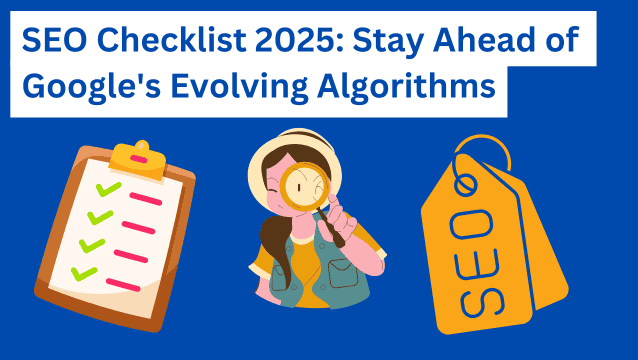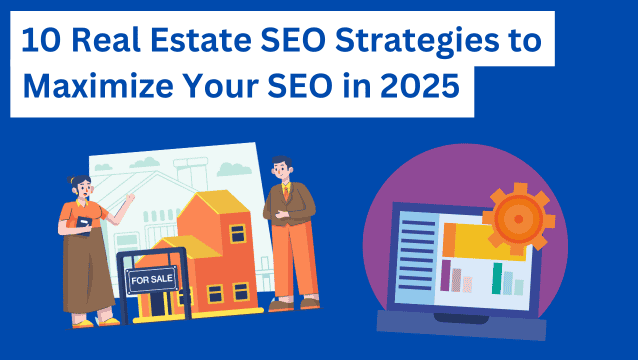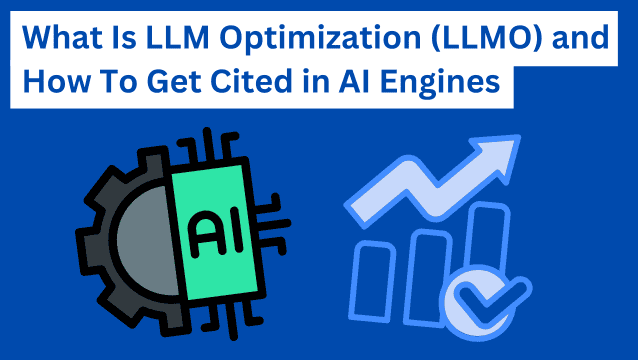Increase conversion rates, drive customer loyalty, and generate revenue with a SaaS marketing plan.
Search engine optimization (SEO) is one way to build brand awareness and increase online visibility. My marketing agency, uSERP, helps with this through quality link building.
But what’s the good of generating traffic to your website if it doesn’t provide the value that SaaS customers crave?
If there’s nothing else I’ve learned from my marketing career, it’s the famous customer-focused question, “What’s in it for me?”
That should always be the core focus of any marketing strategy. You must demonstrate the value potential customers can gain from your product.
From content marketing to landing page optimization, I’ll go over five key strategies you can implement to generate recurring revenue for your SaaS business.
What Is SaaS Marketing?
Organizations use 371 apps on average.
What does this mean? It means that technology is crucial in today’s business world.
It helps businesses streamline workflows, save time, and focus more on strategic initiatives.
This is why SaaS marketing campaigns have become a key focus for marketing teams.
SaaS marketing involves promoting software as a service product.
Many companies rely on SaaS development services to create and maintain their software products while focusing on core marketing strategies.
Marketing software is different from marketing any other product.
Why?
Because SaaS software isn’t a physical product or service. That means customers can’t physically interact with SaaS products.
This is a key factor that makes purchasing physical products so easy. SaaS software doesn’t have this luxury.
Plus, SaaS products are often more complicated because they involve using technology. This makes for a more complex onboarding process. It’s also more difficult to demonstrate how SaaS software works.
SaaS companies also tend to target different audiences. In many cases, these companies target end users (a.k.a. consumers).
Sometimes, they aim to attract decision-makers from other businesses. And these decision-makers are likely not the ones using the software themselves.
The goal is to convince leaders that the product will provide them with a competitive advantage.
That leads us to the next thing that makes SaaS marketing unique. Because the target audience is often business decision-makers, the sales cycle for SaaS software tends to be longer.
To get a feel for the product, they may request a demo. They may also experiment with different providers to determine which best meets their requirements. These processes take time.
Lastly, SaaS marketing differs from other types of marketing because many SaaS products operate on a subscription model.
This means that customers pay a recurring fee for access to the software. So, customer retention is often a major focus for SaaS businesses.
I say all this to say that SaaS marketing largely depends on information.
Think about it.
When you go online and find a highly informative article, chances are that the author is someone who sells SaaS or is a SaaS provider.
For example, if you’re in the marketing industry like me, you’re familiar with the popular CRM solution provider HubSpot.
Their blog promotes their customer relationship management software and other solutions. While they want you to read their blog, the ultimate goal is to try their product.
As the demand for advanced solutions grows, many SaaS providers are now offering generative AI services to enhance their offerings. This trend is gaining traction, as these services can automate tasks and provide deeper insights, making them attractive to both end users and decision-makers.
And it’s worked quite well for them, as they’ve gained over 194,000 customers since their launch in 2006.
So, as a SaaS marketer, your main focus should be to provide information to prospects and leads.
By taking in this information, they’ll come to trust your authority on the topic. From there, they’ll (hopefully) convert into a paying customer.
Understand and Identify Your Target Audience
Before getting started with your SaaS marketing strategy, you must understand your ideal customer.
If you already have an established customer base, you’ve probably already done this. But it doesn’t hurt to re-examine your buyer persona.
The key to doing this is performing customer research. Pull data on your current customers and use SQL data modeling to analyze it. Look for patterns to fine-tune your buyer persona. Collecting and analyzing customer feedback is also crucial, as it provides direct insights into customer experiences and preferences.
For SaaS products that integrate with or rely on database systems, such as those built on Oracle Database, understanding your audience’s technical requirements and data management needs becomes even more crucial. Using SaaS PPC services ensures that your advertising is aligned with the complex needs of enterprise-level users.
Whether you use tools like DBeaver or explore DBeaver alternatives, having a robust approach to data management can help you tailor your marketing strategy to highlight relevant features and compatibility.
If your SaaS operates on a subscription model, it’s important to choose the right platforms for subscription business that align with your customer base. This knowledge can help tailor your marketing approach to highlight relevant features and compatibility.
Below are a few questions I suggest asking to help you better understand your target audience/customers:
- What are the common paths that customers take from awareness to conversion?
- What are the most common touchpoints that lead to conversions?
- What types of content do leads/customers engage with the most?
- What are some common characteristics of your customers?
- How do they interact with your SaaS product?
- What’s the typical length of the sales cycle?
Looking at customer satisfaction data can also help you get an idea of your customer’s goals, motivations, and pain points.
Analyzing churn data can help you understand why customers stop using your product. If you run surveys for customers who unsubscribe, you can determine whether it’s due to specific features, customer support issues, or other factors.
You can also interview customers directly to better understand their goals, challenges, and desires. Understanding the role that customer support plays in their experience can provide valuable insights into potential areas for improvement.
Taking the time to get to know your customers can help you ensure you’re delivering the right marketing messages.
Plus, you’ll learn where to find them, how they make purchasing decisions, and what information they need to make these decisions.
SaaS Marketing Strategies
1. Create Compelling Content
As I mentioned in the previous section, information rules the SaaS world. When potential customers have access to information, they’re better able to make informed decisions.
So, having a content marketing strategy is critical for promoting SaaS software.
To do this effectively, focus on the different stages of the buyer’s journey.
Awareness
At the awareness stage, potential customers know they have a problem. But they haven’t come across a solution yet.
This is where you want to educate them about the problems they’re experiencing. Highlight the risks they could face by not solving the problem.
Then, provide them with insights and tips for how they can solve the problem. You can do this with blogs, lead magnets such as ebooks, and even social media posts.
It’s important to avoid being promotional at this stage. Introducing your solution too early can alienate prospects and make them feel even more confused than they were before.
If they don’t fully understand their problem, how can they begin to wrap their heads around a solution?
Check out how MailChimp educates beginners about email marketing with its Glossary.
Consideration
The consideration stage is where prospects will begin looking for solutions to their problems. They’re now aware that they need to do something about the problem before it causes bigger issues down the road.
Now, they’re researching options with more intent for a resolution or purchase. At this stage, continue to provide prospects with valuable content to educate them.
You can also highlight how your solution is different or better than the competition. Continue to share blog posts, guides, and other resources.
But make them more detailed and solution-oriented. For example, let’s say that you sell e-signature software to small businesses.
For instance, if you offer digital signage players, you might develop an eBook outlining the key features to consider when choosing the best digital signage player for a retail environment.
At the awareness stage, you might write an ebook about the benefits of e-signatures or the problems that e-signatures help solve.
To guide leads down the sales funnel, you can provide information that’s more detailed and actionable by sharing an ebook about what features to look for in an e-signature solution. Additionally, you can use lead generation forms to build lead generation funnels, and ultimately gain paying subscribers.
This is crucial because it helps to nurture leads who are unsure about using e-signatures or how to get started.
Now that the lead knows the factors to consider when choosing e-signature software, they can make a more informed purchase decision.
This Shopify webinar shows potential customers how to design a high-converting e-commerce site.
Prospects who view this webinar likely already know the benefits of having an e-commerce site. Now, they can learn how to build one that drives sales.
Decision
That brings us to the decision stage of the buyer’s journey. Now, the lead wants to make sure they choose the right software for their unique needs.
This is where case studies, webinars, free trials, product demos, customer reviews, and testimonials come in. These types of content will help you differentiate your product from the competition. Integrating offline strategies, such as outdoor ads like billboards like billboards or transit advertising, can complement your digital efforts, raising awareness and guiding potential customers back to your content.
Zoom demonstrates how much customers love using its platform by sharing customer success stories.
2. Start a Referral Program
One of my favorite aspects of marketing is customer referrals. Why? Because nothing is more rewarding than existing customers advocating for your product.
You’ve invested in product development and created a great product that’s been generating amazing results for your customers. So, why not turn them into brand ambassadors who’ll recommend your product to others?
According to a survey, 86% of B2B buyers consider word-of-mouth a significant factor in determining their buying choices.
Since the SaaS business model relies on subscriptions, you’ve likely built a loyal customer base. Incentivize these customers to recommend your services to people they know.
For example, you could offer access to an extra feature or a higher level of your software. Or, you could provide customers who recommend your services with a discount on their subscription. To set up these referral incentives, you can use referral tools, like ReferralCandy.
Dropbox is a great example of how a SaaS company uses referrals to drive more sign-ups. It gives users extra storage space when they invite friends.
3. Build Landing Pages That Convert
Your SaaS landing page should help prospective customers understand what your product does. SaaS startups looking to scale quickly sometimes opt for software outsourcing Poland to augment their in-house development capabilities.
After reading the copy on your landing page, they should have a general idea of how your software can help them.
However, creating a landing page that captivates target audiences can be challenging, especially in the SaaS space. Many companies, for example, choose to hire nearshore developers for specialized expertise in crafting visuals, animations, and product features to showcase their software’s benefits effectively.
Attention spans are short these days. So, you only have a few seconds to convince people why your service is worth their time and attention.
Plus, SaaS software features can be challenging to convey to the average person. This is why using graphics, images, and other visuals on your landing page is important.
Other key elements of a SaaS landing page include:
- Short product features videos: People want to see how your product works. And they should be able to do so in just a few seconds (Remember my point about attention spans?). So, show product feature videos on your landing page.
- Customer testimonials: Brand logos are great. But people want to put a face to the name. Include customer testimonials with either images or videos to show prospective customers that real people benefit from your solution.
- Social proof with brand logos: How are you going to show that your product gets results? Through social proof. When prospects see that you’ve worked with top brands, this builds trust and alleviates doubt.
- Compelling CTA: Be sure to include a clear CTA on your landing page, such as “Request a demo” or “Start your free trial.” That way, prospects know exactly what they need to do.
- White space: White space maximizes the focus on critical elements like CTA buttons. When leads can see CTA buttons clearly, they’re more likely to convert.
So, what does a good SaaS landing page look like? MiesterNote does a good job of conveying the features of its collaborative documentation software on just one page.
Here’s what MeisterNote gets right:
- Visuals to break up the text and support the message
- A clear, compelling CTA (i.e., Get started)
- Plenty of white space
4. Focus on Providing Value
I keep saying it, but in the SaaS business, you must give your prospects the information they need to make a purchase decision.
This is a big part of providing value. Of course, your ultimate goal is to make sales and get people to sign up for your subscription.
But you must establish that potential customers can come to you for their software questions. You can do this by offering free resources like ebooks, templates, or free trials.
Scheduling a demo or consultation, aided by tools like WhenAvailable to find a time that works for everyone, can further improve engagement.
These resources don’t just provide value. But they also allow potential customers to understand what your product is about and try it before committing to a subscription. SaaS product management plays a key role here, ensuring that your product aligns with user needs, enabling you to create resources that resonate with your target audience and highlight your product’s unique value.
So, even if they decide not to make a purchase, they can still walk away with something,
Putting value at the forefront of your SaaS marketing strategy can make it much easier to attract and retain customers. While you take care of your clients, consider outsourcing your SaaS payment processing to a SaaS payment provider that can offer a variety of popular payment methods.
5. Build a SaaS Community
When someone experiences a problem, what’s the first thing they do? They’ll go talk to someone about it.
The same is true for the business world. Shared struggles bring people together. That’s why you see plenty of forums, online communities, and social media groups. They all aim to solve a specific problem.
You can do the same with a SaaS community. The first step is to find out where your customers hang out online (See: Understand and Identify Your Target Audience).
Then, reach out to them and let them know that you have a solution to their problem. You can use a virtual phone number to offer a direct line of communication, allowing prospects or customers to easily get in touch and share their experiences. Get them to spread the word to others who are experiencing the same problem. This strategy can be valuable in the early stages of your SaaS company.
That’s because word-of-mouth can significantly accelerate growth. Then, once you’ve built a strong user base, you can leverage user-generated content in the form of testimonials. There are numerous UGC marketplaces (such as Billo) where SaaS businesses can get their marketing videos custom-made by a community of video creators.
You can leverage makerspace software as it can help foster collaboration within your SaaS community, providing tools for interactive problem-solving and innovation.
Within your community, prospects can find product information that current users love that they can’t find in typical blog posts and articles. Get a digital business card to seamlessly share your information with people in your community and expand your reach.
Salesforce has built an online SaaS community where its users meet and collaborate based on location, role, and interests. The community even has a name: Trailblazers.
Takeaway
Throughout my career, I’ve worked with many successful SaaS companies. I’ve learned a lot about marketing software products.
In an industry that relies on a subscription model to continuously generate revenue, it’s important to implement marketing tactics that place and provide value at the core.
As a software company, you can increase active users and boost monthly revenue by:
- Providing valuable offers and information
- Creating high-converting landing pages
- Creating an effective content strategy
- Building a strong SaaS community
- Starting a referral campaign


